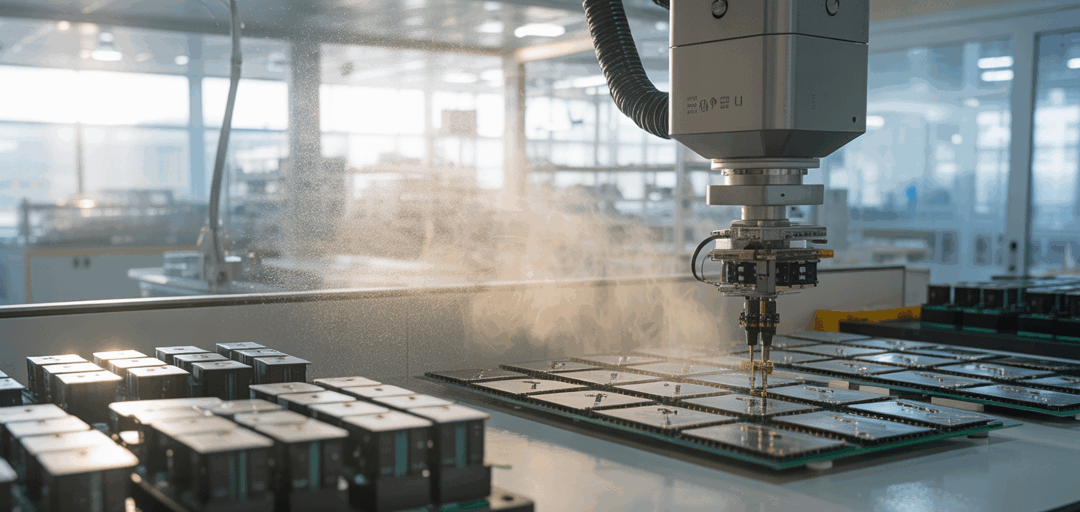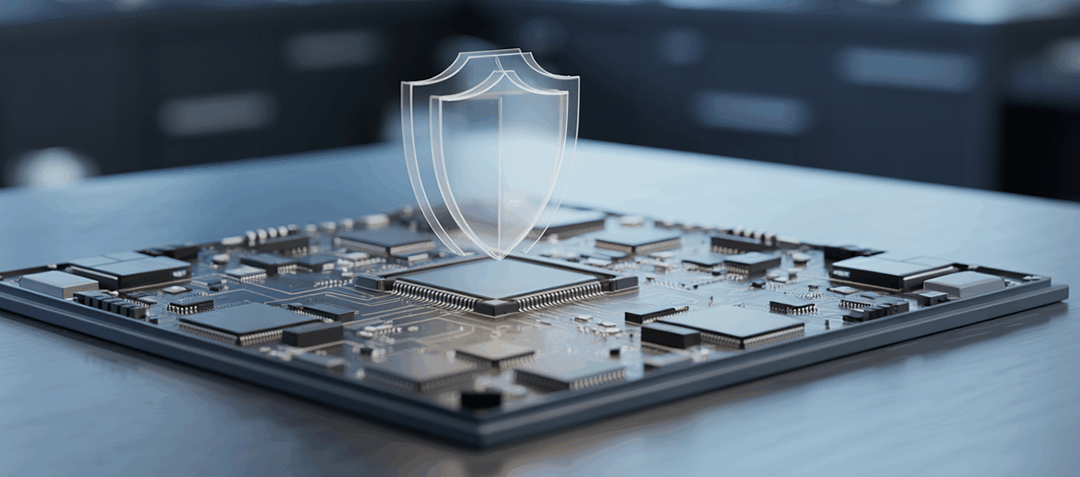Learn how precise humidity control is helping electronics manufacturers reduce warranty claims by $100,000+ and installation costs by up to 80%
The Costly Consequences of Static Discharge
When Advanced Electronics Corporation lost an entire production run of custom circuit boards to static discharge it wasn’t just the $150,000 in immediate component cost that hurt – it was the 3 week production delay that put their quarterly numbers at risk. This is a scenario playing out in the electronics industry worldwide and one that many companies are only just starting to realize.
The Environmental Factor
Electronics manufacturing requires a delicate balance of environmental conditions. While many manufacturers focus on temperature control and clean room protocols, humidity management gets less attention – until problems occur. The relationship between humidity and static electricity is well known, but many facilities struggle to implement effective solutions.
The Real Cost of Poor Humidity Control
The cost goes beyond visible component damage. Modern electronics manufacturing has multiple humidity related issues:
- Component Damage Microscopic damage from static discharge may not be visible but can cause device failure. This hidden damage shows up as warranty claims months or years later and is unpredictable and brand damaging.
- Production Efficiency Inconsistent humidity levels force production lines to slow down or stop to address static issues. These interruptions can cost thousands per hour in lost production.
- Quality Control Challenges Variable environmental conditions make it hard to maintain quality standards across production runs and requires more testing and higher rejection rates.
The Humidity Control Revolution
Modern precision humidity control systems are a huge step up from traditional methods. These systems offer:
- Precise Control Sensors maintain humidity levels to ±1-2% accuracy so sensitive electronic components are in optimal conditions. This precision is throughout the entire facility, no more dry spots or humidity variations that can affect production.
- Non-Wetting Technology: Unlike traditional humidification systems, modern solutions use non-wetting technology that eliminates the risk of water damage to sensitive electronic components and equipment.
- Energy Efficiency Smart control systems save energy and cost while maintaining environmental conditions.
The Numbers: Breaking It Down
Installation Savings Traditional humidity control systems require extensive infrastructure changes and can cost $200,000 or more in installation alone. Modern systems can reduce that by up to 80% with simpler installation requirements and integration with existing facility systems.
Operational Benefits $4,000 or more per year in energy savings $100,000 or more per year in warranty claims Reduced maintenance requirements Longer equipment life Production yield rates
Long-Term Value Over a 15 year period facilities will see: Total energy savings of $60,000 Component failure rates will reduce resulting in $1.5 million in warranty claims Production line stoppages will decrease Employee satisfaction and productivity will increase
Success Stories
Global Circuit Solutions implemented precision humidity control in their main production facility in 2022. Operations Director Sarah Chen says: “The impact was immediate and big. Static related issues dropped 95% in the first month. Our warranty claims are down and we’re seeing better yield across all production lines. The system paid for itself faster than we thought.”
Industry Standards and Compliance
Meeting IPC and other industry standards for environmental control is key for electronics manufacturers. Modern humidity control systems help facilities:
- Stay compliant with industry standards
- Document environmental conditions for quality control
- Reduce audit worries
- Support ISO certification requirements
Future Proof Your Facility
As components get smaller and more sensitive to environmental conditions, the need for precise humidity control will only grow. Investing in modern control systems helps facilities:
- Adjust to changing production needs
- Support more sensitive manufacturing processes
- Stay ahead in quality and reliability
- Reduce costs while increasing output
Employee Health and Comfort
While we focus on production benefits, proper humidity control also creates a better working environment:
- Fewer static shock incidents for employees
- More comfortable working conditions
- Less sick days and more productivity
- Higher employee satisfaction and retention
Make the Decision
Every electronics manufacturing facility is unique. Knowing your specific needs and potential ROI is key to making a smart decision on humidity control investments.
Next Steps for Manufacturers
Request a Facility Assessment Our facility assessment for electronics manufacturers provides:
- Detailed breakdown of current humidity control costs
- Savings calculations
- Custom implementation plan
- ROI timeline
Contact Us Talk to our technical team about:
- Your manufacturing challenges
- Compliance requirements
- Installation options
- Financial impact analysis
The electronics manufacturing industry is evolving with more stringent environmental control requirements. Proper humidity management isn’t just about solving today’s problems – it’s about being ready for tomorrow’s challenges while staying ahead in a competitive market.
Introduction
Electrostatic discharge (ESD) is the sudden flow of electricity that occurs when there is a difference in electric potential between two objects. This can damage sensitive electronic components and devices resulting in costly repairs, downtime and even safety risks. In this article we will look at the impact of static on electronic components, static in the workplace and how to prevent ESD events.
The Impact of Static Electricity on Electronics
Static electricity can wreak havoc on electronic components, causing anything from minor glitches to catastrophic failures. When a static charge builds up on an object, it can discharge suddenly, releasing a burst of energy that can damage nearby electronic components. This can lead to a range of issues, including data loss, system crashes, and even complete device failure.
Beyond immediate damage, static electricity can have long-term effects on electronics. Repeated exposure to static charges can degrade components over time, leading to reduced performance and eventual failure. This hidden damage often results in increased warranty claims and reduced product reliability, ultimately affecting the bottom line and brand reputation.
To mitigate the impact of static electricity, it is essential to implement effective static control measures. This includes using anti-static protective clothing, grounding straps, and wrist straps, as well as controlling the humidity levels in the environment. By doing so, manufacturers can protect sensitive electronic components and ensure the reliability of their products.
Static Electricity and Electronic Components
Static electricity can have a devastating effect on electronic components, from minor to catastrophic. Electronic components like microchips, transistors and diodes are designed to operate within specific voltage and current ranges. When a static discharge occurs it can exceed those limits and damage the component. In some cases the damage may not be visible but can cause premature failure or malfunction of the component. This hidden damage results in increased warranty claims and reduced product reliability and ultimately the bottom line and brand reputation.
ESD generation occurs when various materials and activities contribute to the buildup of static electricity. Materials are categorized into ESD Generative, Neutral, and Conductive, and actions like pulling tape or rolling in a chair can increase static charge. Understanding these factors is crucial to effectively prevent ESD damage in electronics.
Understanding Electrostatic Discharge (ESD)
Electrostatic discharge (ESD) is a sudden flow of electricity that occurs when there is a difference in electric potential between two objects. This phenomenon can happen when two objects come into contact and transfer electrons, resulting in a static electric charge. ESD can cause significant damage to sensitive electronic components and devices, potentially leading to complete device failure.
ESD can occur in various situations, such as when handling electronic components, working with electrical devices, or even simply walking across a carpeted floor. To prevent ESD, it is crucial to implement effective static control measures. This includes using anti-static protective clothing, grounding straps, and wrist straps, which help to dissipate static charges and protect electronic components from damage.
Static in the Workplace
Static electricity is a common occurrence in the workplace, especially in areas where electronic components are handled or manufactured. It can be generated by many sources – clothing, carpets, and equipment that generate substantial static charges. Understanding the causes of static is key to preventing ESD events. By identifying the sources of static and controlling them, organisations can reduce the risk of ESD damage and ensure their electronic components are reliable. Implementing anti-static flooring, proper grounding and monitoring can greatly reduce the risks of static.
Humidity and Static
Humidity has a big impact on static electricity. In dry environments the air is more prone to generating static, as there is less moisture to dissipate static charges. In humid environments the air is more conductive and static charges dissipate more quickly. Understanding the relationship between humidity and static is key to controlling ESD events. By maintaining a relative humidity of 30-60% you can reduce the risk of static and prevent ESD damage. This range creates an environment where static charges don’t accumulate and protect sensitive electronic components.
Additionally, maintaining the same electrostatic potential across all processes and materials is crucial to prevent ESD. Ensuring uniform electrostatic conditions eliminates charge generation, enhancing product reliability and productivity.
The Role of Humidity in Preventing ESD
Humidity plays a crucial role in preventing electrostatic discharge (ESD). In humid environments, the air is more conductive, allowing static electric charges to dissipate more quickly. This reduces the risk of ESD and helps to protect sensitive electronic components.
Conversely, in environments with low humidity, such as dry climates or air-conditioned spaces, the risk of ESD is higher. The air is less conductive, allowing static charges to build up more easily. To mitigate this risk, it is essential to implement effective humidity control measures. This can include using humidifiers or controlling the temperature and humidity levels in the environment to maintain a relative humidity of 30-60%.
By maintaining optimal humidity levels, manufacturers can reduce the risk of ESD and ensure the reliability of their electronic components.
How to Prevent Electrostatic Discharge Events
Preventing ESD events involves a multi-faceted approach of understanding static, implementing esd control measures, controlling the environment, and using protective equipment. Some ways to prevent ESD events are:
- Wearing anti-static protective clothing such as wrist straps and heel straps to prevent static from building up on the body.
- Implementing static control measures such as grounding straps and conductive mats to dissipate static.
- Maintaining a relative humidity of 30-60% to reduce static.
- Using conductive plastic and other materials to reduce static generation.
- Implementing basic principles of static control – designing in immunity and eliminating and reducing generation.
By doing this, manufacturers can create a safer and more reliable production environment, reduce the risk of ESD events, and extend the life of their electronic components.
Controlling Static Charge Build-Up in Workplaces
Controlling static charge build-up in workplaces is essential to preventing electrostatic discharge (ESD) and protecting sensitive electronic components. There are several effective strategies to manage static charge build-up:
- Anti-Static Protective Clothing: Wearing anti-static protective clothing, such as wrist straps and heel straps, can prevent static from building up on the body.
- Grounding Straps: Implementing grounding straps and conductive mats can help to dissipate static charges.
- Humidity Control: Maintaining a relative humidity of 30-60% can reduce static charge build-up.
- Conductive Materials: Using conductive plastic and other materials can help to dissipate static electric charges.
By implementing these measures, workplaces can significantly reduce the risk of ESD and protect sensitive electronic components, ensuring a safer and more reliable production environment.
Humidity Control for Electronics Manufacturing
Humidity control is key in electronics manufacturing as it prevents ESD and ensures electronic components are reliable. Implementing effective humidity control is also a crucial aspect of ESD protection, which mitigates risks associated with electrostatic discharge. There are:
- Precision humidifier systems like MicroCool FOCUS which give you precise control over humidity.
- Dehumidification systems which remove excess moisture from the air to prevent static.
- Humidistats which monitor and control humidity to maintain a relative humidity of 30-60%.
By using these humidity control solutions, you can reduce the risk of ESD events and ensure your electronic components are reliable. They protect sensitive devices and contribute to a more stable and efficient process which means better products and lower costs.
Benefits of a Humidity Control Strategy
Implementing a humidity control strategy offers numerous benefits for electronics manufacturing:
- Reduced Risk of ESD: Proper humidity control reduces the risk of electrostatic discharge, protecting sensitive electronic components.
- Enhanced Reliability: Maintaining optimal humidity levels improves the reliability and performance of electronic devices.
- Data Protection: Reducing the risk of ESD helps to prevent data loss and system crashes.
- Increased Efficiency: A stable environment with controlled humidity levels enhances overall efficiency and productivity in the workplace.
By controlling the humidity levels in the environment, manufacturers can create a safer and more reliable setting for electronic devices and components, leading to better products and lower costs.





